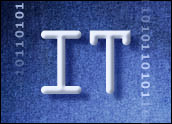
Whether server, storage or virtual, migrations have never been easy. The difficulty has always been the downtime required to move physical or virtual workloads from one platform to another.
Virtualization technology from VMware VMotion to Microsoft Hyper-V live migration has significantly helped because they can move live workloads between virtual infrastructures, greatly reducing the impact to production systems. However, that only covers the virtual landscape and specifically only migrations between like virtualization vendors and not physical server or hardware storage vendors.
Many times the virtual solution actually locks the data center manager into hardware-specific solutions, making it that much more difficult to move from one solution platform to another. Site and data center consolidation still have these same challenges, even though many have adopted the virtualization technology to facilitate and centralize some of the management — this is why an X2X migration solution will dynamically change the data center landscape.
More Options
The X2X migration is a culmination of all platform migrations — P2V, V2P and V2V — for migrating between any combination of physical or virtual servers and provides storage migration capabilities as well. Data center managers ultimately will have a voice when it comes to moving platforms, which will put them back in the driver seat when it comes to customer service. In the past, if there was a server or storage hardware issue, the only option was to work with the hardware vendor, painfully detailing the problem and waiting for the next driver update for a fix.
So, what if the data center manager had the ability to dynamically move that physical or virtual workload from one hardware vendor server to another vendor server? Suddenly, the hardware vendor has much more at stake because the data center manager has options. No longer does the issue have to be endured while waiting for a resolution. Just as some of the virtualization vendors have been able to move virtualization workloads between platforms, the data center manager will have the ability to move that workload across any platform.
Storage migrations will be no different. SAN (storage area network) migrations have had the same challenges moving data as any other migration. Whether the storage is running low on disk space or there is a need for a power supply, HBA (host bus adapter) or other hardware component upgrade, there wasn’t really any choice when it came to moving that data. If there was a Fibre Channel SAN but a need for more flexible iSCSI architecture, the only option was to rip and replace with a new iSCSI device. If you were looking to implement in the local data center as well as communicate to the colocation or disaster recovery facility for business continuity, there were even less options (which usually included buying two of the same device so the two could communicate).
X2X migrations and flexible architecture tools will allow disparaging hardware to talk and work together without ripping and replacing with similar hardware to get some of the same functionality. Standard Windows servers with direct attached storage will be able to quickly convert into more flexible iSCSI devices to provide the same functionality as new iSCSI devices. The benefit will be that this can all be accomplished while using the existing infrastructure in the datac enter without the cost of purchasing new hardware.
Consolidation is going to continue to be a trend for 2009 and beyond as companies look to reduce costs through consolidating sites and infrastructure while maximizing the benefit of existing hardware. Some of the issues with site consolidations, beyond the typical downtime required for traditional migration tools, are the ability to network those sites together. WAN (wide area network) infrastructure and bandwidth becomes an additional cost in order to have users at remote facilities access data that may only be available on Fibre Controller SANs.
Having the flexibility to convert those storage devices to iSCSI storage solutions would then allow the cloud to be used as the connecting portal versus expensive point-to-point VLAN (virtual local area network) access — then the site consolidation financially makes much more sense by being able to run mission-critical applications from remote distances. This not only helps with facilitating a centralized management solution for operations, but it also servers as a disaster recovery solution meeting certain industry compliances like HIPAA, SEC and SOX.
Top Five
My top five ideas for how X2X migration and flexible architecture tools should work:
- Continuous Replication: First the solution will need to continuously replicate physical or virtual workloads. These workloads will include everything from the operating system and applications to the associated data in real-time, all without any interruption to production users.
- Hardware Independence: Next, the solution will need to be able to move those workloads in real-time across any hardware platform. This will provide IT managers the greatest flexibility to rapidly provision new machines regardless of the vendor solution. This could even apply to call centers that need to maintain hundreds of workstations with inherent security. That portability to boot server or workstation images will help rapidly provision new and more efficient machines whenever required.
- Virtualization Platform Independence: This is the greatest and most advanced technological breakthrough. Being able to move virtual workloads between virtualization platforms may even scare some virtualization vendors, once available. Virtualization platform independence will provide an additional layer of flexibility, as it removes the virtualization platform lock. Virtual workloads will be able to be moved in real-time not only between different virtualization platforms, but also from virtual to physical platforms and vice-versa — something that is not available today. Virtualization vendors have the ability to move the workloads between their own virtual hosts but not to a physical host if needed, and definitely not to another virtualization competitor platform.
- Little to No Downtime: Downtime has always been the biggest challenge with migrations and will remain so until workloads can be moved without user interruption. Data center managers have lost too many weekends attempting just a single migration and now will be able to conduct entire data center migrations simultaneously without users knowing their critical workloads are being moved.
- Storage Flexibility: Converting storage from a direct attached storage to a SAN to an iSCSI device will quickly provide the ability to dynamically adjust storage capabilities and provide storage available to multiple sites versus just the primary data center.
I have seen many presentations on “infrastructure 2.0,” “the next-generation data center” and “dynamic IT infrastructure,” and all have been based on vendor-specific hardware solutions. Most IT managers won’t consider that truly dynamic if there is vendor lock into specific hardware. The X2X solution will most likely be a software solution, which will be the only way to maximize flexibility and remain hardware- and virtual platform-independent. It won’t be long before someone figures this out — and who that is will have the power to dynamically change data center architecture and put data center managers back in control with efficient solutions and time management.
Brace Rennels is CBCP (certified business continuity professional) at Double-Take Software.
















































http://www.platespin.com is the leader in workload management, the evolution of what was started as x2x or anywhere-to-anywhere migrations. This company offers migrations that are hypervisor agnostic, live, and will flex to work with your storage environment.
There is clearly and established leader in the space here…what is double-take doing moving away from what it does best…DR???